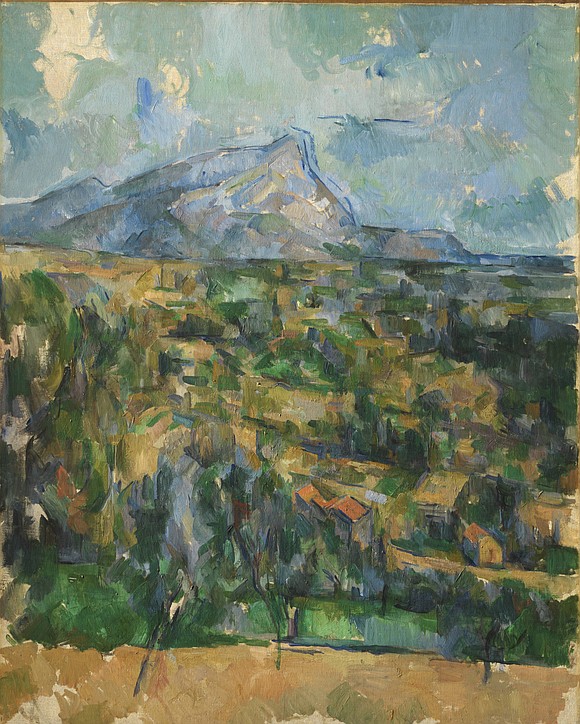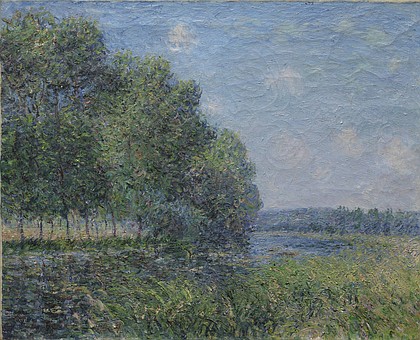Impressionist and Post-Impressionist Masterpieces from the Pearlman Foundation opens May 21 at the MFAH
The exhibition will present signature paintings and sculptures from the distinguished Henry & Rose Pearlman Foundation Collection of Impressionist, Post-Impressionist and Modern Art
Style Magazine Newswire | 4/18/2023, 1:44 p.m.
In the late 19th and into the early 20th century, European artists’ ability to travel along newly industrialized railway lines, and cross paths and share ideas, led to the transmission and evolution of varied artistic styles. Impressionist and PostImpressionist Masterpieces from the Pearlman Foundation will present 38 outstanding works from the renowned collection assembled in the second half of the 20th century by New York collectors Henry and Rose Pearlman. Paintings and sculptures by Cézanne, Manet, Degas, Gauguin, van Gogh, Pissarro, Toulouse-Lautrec, Modigliani, Soutine, Lipchitz and others will be seen within the context of their experience of transience – regional, national, and international. It will explore the friendships the artists developed in Paris, as well as the many varied locations and sites that shaped their work.
The exhibition will be on view at the Museum of Fine Arts, Houston from May 21 through September 17, 2023. “Henry Pearlman’s highly personal approach to collecting sought to capture the momentum of art and thought at the dawn of the modern era,” commented Gary Tinterow, Director and Margaret Alkek Williams Chair, the Museum of Fine Arts, Houston. “This exhibition is an exceptionally rare opportunity for visitors to see this distinguished collection outside of its home at Princeton University. For this presentation, we will be juxtaposing Pearlman pictures with works from the MFAH collection in order to broaden the representation of the artists, as well as to highlight Henry Pearlman’s distinctive point of view.” Ann Dumas, MFAH consulting curator of European art, noted, “Henry Pearlman was fascinated by both the art and the lived experiences of the artists he collected. He was interested in work that reflected not only creative experimentation, but also meaningful exchanges and relationships between painters and sculptors. He was especially drawn to artists whose travels and emigration stimulated creative exchange and innovation, and so his collection highlights the dynamic and increasingly international artistic crossroads of Paris during the late 19th and early 20th centuries.”
About the Exhibition The installation’s organization will explore relationships, both personal and artistic, between artists, broader cultural movements and Pearlman as a collector. The pairing of Vincent van Gogh and Paul Gauguin alludes to their mutual influence. Van Gogh’s search for inspiration led him from the Netherlands to England, Belgium, Paris and eventually the South of France. Gauguin’s trajectory took him to Peru, France, Tahiti and the Marquesas. The two artists met in Paris in the fall of 1887, and developed an alliance that profoundly influenced both of their work. Included here is van Gogh’s Tarascon Stagecoach (1888), painted in Arles. Van Gogh produced this painting to impress Gauguin with how the qualities of light in southern France had transformed the younger artist’s own understanding of color and developing signature style. Presented in this gallery along with van Gogh’s Tarascon Stagecoach is Gauguin’s Te Fare Amu (The House for Eating) (1895 or 1897), a polychromed woodcarving. The imagery connects to Gauguin’s personal interpretations of Tahitian myths, but the sculptural format evokes the Maori wood carvings that the artist had seen in New Zealand. Chaim Soutine, Jacques Lipchitz and Amedeo Modigliani, all Jewish immigrants to Paris, each came there with new ideas about painting and sculpture, and each settled in the famed cosmopolitan artists’ residence La Ruche (The
Beehive) in Montparnasse, where prolific cross-cultural connections fueled their creative output. Here, three portraits by Modigliani – two paintings and a limestone -- and three landscapes and three portraits by Soutine express how these leading School of Paris artists remained true to figuration while distorting form for expressive ends. Four Lipchitz sculptures show both his expressive and his more naturalistic approach. Chaïm Soutine, Self-Portrait, c. 1918, oil on canvas, the Henry and Rose Pearlman Foundation, on loan to the Princeton University Art Museum. Photograph: Bruce M. White Jacques Lipchitz, Acrobat on Horseback, 1914, bronze, the Henry and Rose Pearlman Foundation, on loan to the Princeton University Art Museum. Photograph: Bruce M. White The exhibition also presents the strength of Henry Pearlman’s collection of Paul Cézanne’s paintings and watercolors. One section of the exhibition will consider the significance of Cézanne’s native Aix-en-Provence on his sense of self and his work. It will also evoke his times in Paris and the artistic relationships he forged there. Featured paintings include Cistern in the Grounds of the Château Noir (c. 1900), Route to Le Tholonet, (1900-04) and a Mont Sainte-Victoire (c. 1904-06), from one of Cézanne’s most iconic series. Finally, Henry Pearlman sought out artists, developing lasting relationships with several, including Lipchitz and the Austrian painter Oskar Kokoschka. With the advent of World





